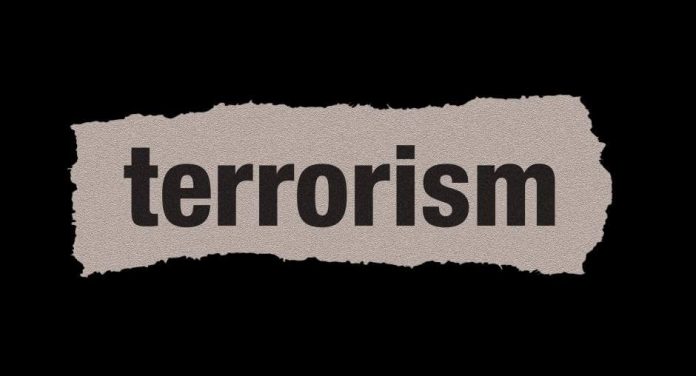This article is written by Sumedha Bhat, from Hidayatullah National Law University, Raipur. This is a comprehensive article on the necessity of elimination of terrorism under the SAARC Convention Act, 1993.
Table of Contents
Introduction
The social affair may be defined as a gathering to promote friendly association especially with people who share same interests, for which SAARC was incorporated, to ensure that there is unification in the different spheres of the neighboring countries, to allow a change in the positive end, and stride towards a better forum for the developing countries to prosper and grow. SAARC directly serves as a medium for the change in economic to political to environment growth and regional integration.
SAARC is geopolitical, in addition to a monetary corporation consisting of eight South Asian nations. It performs as an agent of guiding force for its member states. The SAARC Convention (Suppression of Terrorism) Act, 1993 was introduced to make the Convention on Suppression of Terrorism of the South Asian Association for Regional Cooperation (SAARC, Act no. 39 of 1993) successful. The SAARC regional on 4th November 1987, signed the Convention on Suppression of Terrorism, and on 22nd August, 1988, it came into effect. As India was the signatory and rectifying country to the agreement, the act was implemented.
The Convention Act provides for the short title and application, and also extends to entire Indian territories. This Act’s provisions are also applicable or extend to the crimes executed outside the territories of India except Section 6.
Objective and scope of the Act
Compiling the Dhaka Summit, 1985 and the Bangalore Summit Declaration, 1986 discussions, the organization came across the following objectives as necessary to achieve under this convention:
- To eliminate terrorism as it affects the stability and security of the countries.
- To eradicate all the acts, means, and practices of terrorism.
- To unequivocally castigate the methods used by criminals to increase the terrorism as their abhors impact the life and property, regional and international peace, socio-economic development, political and development stability.
- To maintain a good friendly relationship with the neighbours which gets hampered by the acts of terrorism.
- To ensure that the territorial integrity and the sovereignty of States aren’t jeopardised.
- To take stringent steps to make sure that enforcers of the terroristic acts are prosecuted and punished by making way for their deportation, prosecution and extradition.
- To acknowledge the norms, standards, and ethos of UN Resolution 2625, which says that each of the States shall forbear from enduring, provoking, and abetting terroristic practices in other regions or states.
The scope of the Act has accelerated, and regional cooperation has contributed to the growth. Also, it has enhanced the welfare of South Asian nations and strengthened the collective self-reliance and mutual assistance.
Membership
SAARC is a geopolitical union of South Asian nations and regional intergovernmental cooperation. The member states are Afghanistan, Bangladesh, Bhutan, India, the Maldives, Sri Lanka, Nepal and Pakistan and also includes nine observers which are Australia, China, the European Union, Iran, Japan, the Republic of Korea, Mauritius, Myanmar, and the United States of America.
Principal organs
Following are the six principal organs of SAARC:
- Meeting of the heads of State or Government: Annual basis meetings are arranged at the level of summit.
- The Council of Ministers: Meetings are held twice a year, including 37 sessions. It performs the articulation of association policies, cooperation progress review, new cooperation areas, decisions are taken, if necessary, additional mechanisms are established, and discusses general interest matters.
- Standing Committee: Foreign Secretaries are the part of the Standing Committee of its member states. Approval of finance and projects, mobilization of resources, priorities are determined, coordination, and overall monitoring are provided by the committee.
- Technical Committee: It consists of member state representatives. They formulate and monitor the implementation of projects and related programs, respectively, in their fields. Also, determines sectoral program implications financially.
- Action Committee: This committee is set up by the Standing Committee, consisting of member states for programs involving more than two member states but not all.
- Secretariat: It was established in January, 1987 in Kathmandu. It consists of seven directors, staff for general services and the secretary-general. Council of Ministers appoints the secretary-general on the rotation principle for three years on a non-renewable tenure.
Important provisions
- Section 3 is the most important to date, as it dispenses in India concerning the applicability of Article 1 to 8 of the said Convention.
- Furthermore, it provides that in India as long as any law by now in force contains some provisions to the contrary in either context, that law shouldn’t have impact if such provision is applicable in either context.
Limitations and exceptions
This Act is applicable and extends to the entire Indian territories but Section 6 of the Act. Offences having political character are not to be dealt with under this Act like an offence under the provisions of the Extradition Act, 1962. The Act also comprises a Schedule, which includes Convention Articles that are applicable in India as it is one of the Convention signatory countries.
Recent developments
Additional protocol was lined up via way of means of the SAARC to the Convention on Suppression of Terrorism. SAARC’s Standing Committee, in their 28th session in August, 2002, at Kathmandu intiated the SAARC Member Countries Legal Advisers to devise a draft of the aforesaid additional Protocol for streamlining the Convention and seeking to delegate responsibilities on the members in connection with United Nations Security Council Resolution (1373), 2001, and in addition to The International Convention for Suppression of Financing of Terrorism.
The main aim of the aforesaid additional protocol was to brace the apprehensive Convention by interdict the provisions, bevy, or purchase of funds to the dedication of terrorist acts and take additional precautions to eliminate and prohibit the funding of these actions. In the 18th SAARC Summit, 2014, the members agreed to set up a monitoring desk for cybercrime. To combat trans-national offenses and to root out terrorism, the members were to ensure the effective and proper functioning of the Convention and its Additional Protocol by enacting mandatory legislation at the regional level.
The Act as a roadmap for the future
In the region of South Asia, the terrorist scourge poses the single greatest threat to stability and peace, and its support for the environment needs to be removed without any prejudice or bigotry. Eradication of terrorism with all its manifestations is indeed a precondition not just for active cooperation, but even for our region’s very existence. The acts against terrorism will decide the importance of SAARC and will determine our mutual journey into the future to become more successful. Satellite of South Asia is one of the edifying examples of the way in which India had been picking up an initiative for opulence in neighboring countries. For rooting out the terroristic acts, a resolute expression can at best be effective if translated into concrete action. People responsible for the execution of such atrocious offenses against humanity should realize that under this Act, there will be justice in this world, where the member nations work together with their sole and collective capability to incarcerate that the guilt is growing, which needs to be eliminated. India received the backing of SAARC leaders during its formidable call for the Convention on Suppression of Terrrorism.
Critical analysis
Numerous analysts have identified SAARC as a failure. Over the past three decades, as per the observers SAARC has accomplished very little. The rudimentary vulnerability in which SAARC suffers is the deficit in faith between the member countries. Also, political differences have made a deep pessimistic jolt on political cooperation. Such tensions among the member countries leave room for the outside forces to interfere in the politics of South Asians. Although SAARC survived the various Indo-Pak crises, it hasn’t avoided the enmity’s ill effect among its two biggest States. Most of the damage caused to SAARC is because of the tensions among South Asia’s two chief powers hindering its development and progress.
The persistent Kashmir issue became and continues to be one of the greatest hitches in the path of SAARC’s progress as a fly in the ointment, emerging from Indo-Pak traction that tends to create a gloomy thump on the cooperation. The greater regional amalgamation efforts are often baffled due to the other affairs like mistrust among Indo-Pak and Sir Creek dispute.
SAARC Summit, 2016 was boycotted by India because of the relentless aid given by Islamabad to sponsor terrorist acts in India and the attack on the base of the Indian Army in Uri in J&K by terrorists based in Pakistan.
In support to which other three member countries Afghanistan, Bangladesh, and Bhutan respectively, consolidate boycotting the summit. Such events hinder the progress and growth of people in the world where it is moving forward to become far better and interconnected as with every single day, the flow of goods and movement of people becomes easier. Here, it becomes the lion’s share for SAARC to meet its commitments or risks, getting pushed back.
Recommendations
- Act needs to be enacted by each member country for its full-flourished growth and development for eradicating the menace of terrorism.
- SAARC Convention needs to be more stringent to eliminate the threats of terrorist acts for cooperation among the member countries.
- Terrorism is like a “seething cauldron” under the seize of disparate ideologies, which highlight the demand for the member countries of the SAARC for joining hands solely and collectively.
- All the SAARC member countries need to firmly oppose the heinous crimes, terrorism, bigotry of religion, and mutiny.
- All member countries need to explore the potential of establishing stability in the nation and maintaining peace.
- Formation of trust mutually and peace among the South Asian Nations can be instituted by enhancing the SAARC Convention Act, 1993 and its additional protocol.
- Terrosim is increasing because of the abettors hiding behind the violence, offences or crimes in the faith of religion which needs to be the primary focus. Center stage needs to be taken by India and dissolve the discern mistrust as it is the only member state applying the SAARC Convention Act, 1993.
- The member nations’ sense of insecurity needs to be removed as it hinders the applicability of the Act.
Conclusion
Eventually, the conclusion can be made that although the SAARC Convention (Suppression of Terrorism) Act, 1993, has been of great importance, the number of internal differences and disputes has resulted in its efficacy and efficiency being undermined. To the nation, improving the organization is vitally necessary. No matter the Act’s shortcomings so far might be, SAARC is the only forum at which the member states meet and address problems, disputes, or issues in a State or among the member state of citizens approx. 1.6 billion. Moreover, terroristic acts have been widespread and brazen to destabilize communities. Therefore, leaders of SAARC needs to be determined jointly to firmly eradicate all types and embodiments of terrorism from the nation for the development, peace, and opulence among the member states.
References
Websites referred
- SAARC SECRETARIAT; http://saarc-sec.org
- SAARC Regional Convention on Suppression of Terrorism; https://www.satp.org/satporgtp/southasia/documents/papers/SAARC%20Regional%20Convention%20on%20suppression%20of%20Terrorism.htm
- The SAARC Convention (Suppression of Terrorism) Act, 1993; https://lawyerslaw.org/the-saarc-convention-suppression-of-terrorism-act-1993/
- Terrorism single largest threat to peace in South Asia: India to SAARC; https://economictimes.indiatimes.com/news/politics-and-nation/terrorism-single-largest-threat-to-peace-in-south-asia-india-to-saarc/articleshow/65989701.cms
- 18th SAARC Summit; www.careerride.com
- South Asian Association for regional Cooperation (SAARC); https://www.nti.org/learn/treaties-and-regimes/south-asian-association-regional-cooperation-saarc/
- Additional Protocol to the SAARC Regional Convention on Suppression of Terrorism; https://mea.gov.in/bilateral-documents.htm?dtl/7409/Additional+Protocol+to+the+SAARC+Regional+Convention+on+Suppression+of+Terrorism
Online authorities
- heinonline.com
- lexisnexis.com
- manupatra.com
- scconline.com
- westlawindia.com
Dictionary referred
- GARNER BRYAN, BLACK’S LAW DICTIONARY (8th Edition, West Group Publications).
- JUDY PEARSALL, CONCISE OXFORD DICTIONARY (10th Edition, Oxford University Press).
LawSikho has created a telegram group for exchanging legal knowledge, referrals and various opportunities. You can click on this link and join:












